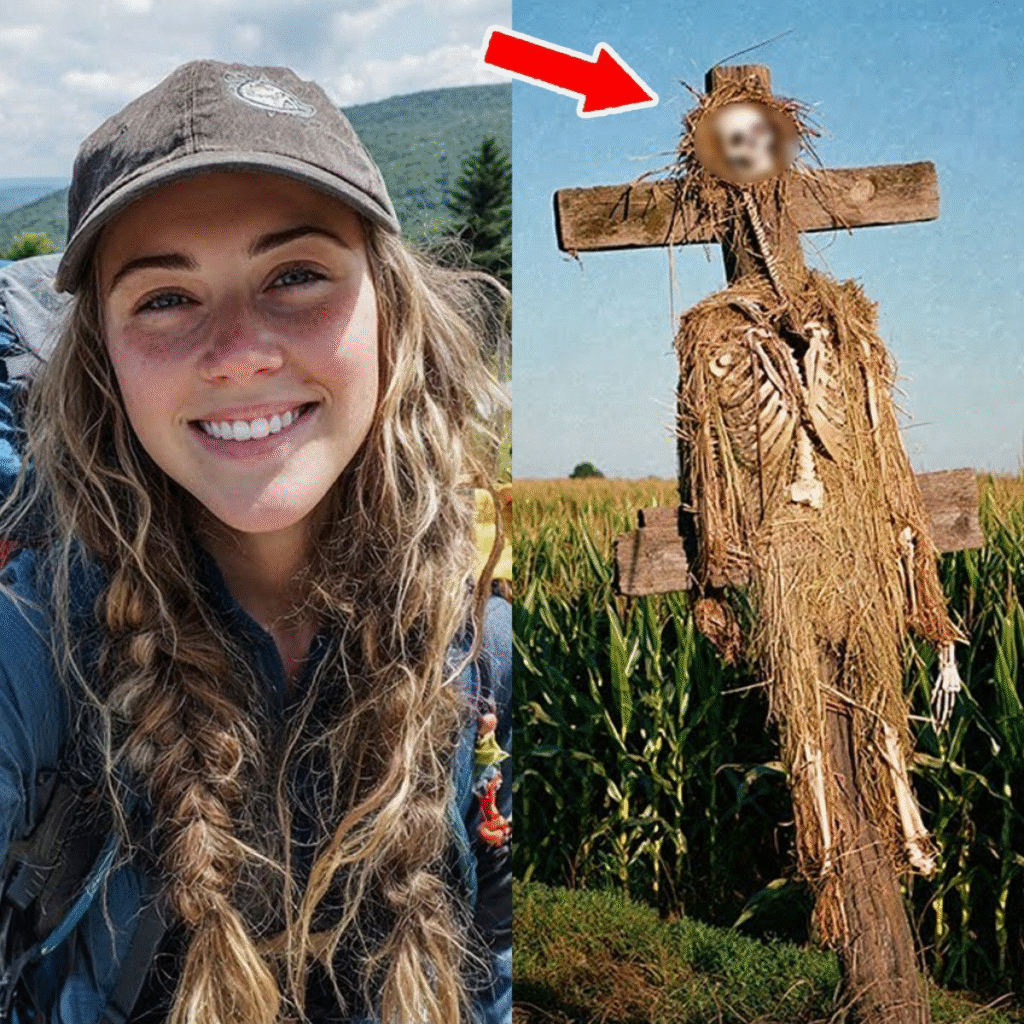
She dreamed of freedom — a long hike, a new beginning, and a summer to remember.
But two years after she vanished, Sara Jenkins was found — not deep in the forest, not at the bottom of a ravine, but inside a scarecrow on a quiet Virginia farm.
Her bones were tied together with straw, nailed to a wooden cross.
This isn’t just a story about the dangers of the wild.
It’s a story about the darkness that hides in plain sight.
PROMISE (Set Up the Mystery and Emotional Stakes)
In the summer of 2005, Sara Jenkins, 24, from Columbus, Ohio, was chasing her lifelong dream — to hike the Appalachian Trail solo before settling into her journalism career. She wasn’t a thrill-seeker; she was prepared, careful, and curious about the world.
She kept a small travel blog called Sara Sees the World, where she shared her photos, her stories, and her joy. Her last post, dated July 28, 2005, ended with the haunting words:
“The mountains are calling me and I have to go. Don’t lose me.”
Ten days later, her parents realized they had.

MECHANICS (The Story Unfolds — Discovery, Clues, and Truth)
The Disappearance
After weeks of silence, search teams combed the Appalachian Trail in Virginia. They found her last logbook entry — Sara J., July 29 or 30 — and nothing else.
No gear. No signs of struggle. No farewell message.
Her parents spent their savings on private investigators, but the forest held its secrets. Eventually, the story faded from headlines.
The Storm and the Scarecrow
A brutal summer storm swept through the Shenandoah Valley.
The next morning, a farmer named Jim drove past his neighbor’s land — a quiet, aging man named
Silas Blackwood.
Blackwood’s scarecrow had fallen.
It had always looked odd — too human, too heavy, dressed in women’s hiking clothes.
Curiosity made Jim stop. What he saw beneath the straw made him scream.
Inside the scarecrow’s burlap body were human bones and scraps of clothing — including a hiking boot. Within hours, deputies surrounded Blackwood’s farm.
The Investigation
At first, Blackwood calmly denied everything.
He said he’d “found the bones in the woods” and didn’t want trouble.
But when police searched his barn, they found a locked army box hidden under chains and tires.
Inside:
- A bright red hiking backpack
- Sara’s journal
- Her Appalachian Trail map
- Her digital camera
When investigators recovered the camera’s files, the final photos chilled them to the core.
The last five images were blurry — taken in panic.
A plaid shirt. The ground. Boots. Then… a man’s face twisted with rage.
It was Silas Blackwood.
The Confession
Confronted with the photos, Blackwood’s calm cracked.
He confessed.
He had attacked Sara when she stopped near a stream on his property.
He murdered her, hid her remains through the winter, and the next spring, turned her into a
scarecrow — dressing her bones in her own clothes.
“I wanted her close,” he said coldly. “That way, she’d stay quiet.”
His confession was emotionless. Clinical.
Sara’s final act — photographing her killer — was the reason he was caught.
The Verdict
The evidence was undeniable: DNA, diary, camera, confession.
Silas Blackwood was convicted of first-degree murder, kidnapping, and rape.
He died in prison seven years later.
Sara’s parents called her a hero. Even in death, she told the truth.
LEGACY (Reflection + Closure)
Sara Jenkins set out to show the world the beauty of the Appalachian Trail.
Instead, her story revealed the darkness of human nature — and the strength of a young woman who, in her final moments, refused to disappear quietly.
Her legacy endures — in every hiker who carries a camera, in every story that demands justice, and in every parent who refuses to give up hope.